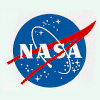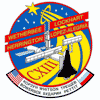|
Sunday:
November 10, 2002 | |
0100 GMT |  |
Soyuz returns to Earth; Endeavour ready to fly
Two cosmonauts and a Belgian astronaut undocked from the international space station aboard the Soyuz TM-34 capsule today and landed in central Asia a few hours later. Meanwhile, shuttle Endeavour's countdown is ticking smoothly toward launch at 12:58:40 a.m. EST Monday.
 FULL STORY - updated! FULL STORY - updated!
 |  |

|  |

Video coverage for subscribers only:
 VIDEO:
TAXI CREW BOARDS SOYUZ AND CLOSE HATCHWAY QT or RV VIDEO:
TAXI CREW BOARDS SOYUZ AND CLOSE HATCHWAY QT or RV
 VIDEO:
SOYUZ TM-34 UNDOCKS FROM STATION QT or RV VIDEO:
SOYUZ TM-34 UNDOCKS FROM STATION QT or RV
 SUBSCRIBE NOW SUBSCRIBE NOW

|
NASA statement on space transportation plan
The Administration is preparing a change to its Fiscal Year 2003 budget to implement a new Integrated Space Transportation Plan (ISTP) and ensure the space station is properly financed and better positioned to achieve its scientific research priorities.
 FULL STORY FULL STORY
 |  |

|  |
|
Saturday:
November 9, 2002 | |
0240 GMT |  |
NASA starts countdown for Monday's shuttle blastoff
The shuttle Endeavour's countdown began early Friday for blastoff Monday on a year-ending flight to the international space station. The 11-day mission will rotate the station's resident crews and install a 28,000-pound truss.
 FULL STORY FULL STORY
 MISSION FACTS AND FIGURES MISSION FACTS AND FIGURES
 DETAILED MISSION FLIGHT PLAN DETAILED MISSION FLIGHT PLAN
 SHUTTLE LAUNCH TIMELINE SHUTTLE LAUNCH TIMELINE
 COMPLETE VIDEO LISTING COMPLETE VIDEO LISTING
 |  |

|

|
 |
 |
 |
News Archive
Oct. 28-Nov. 3: Stardust zooms past asteroid Annefrank; Saturn-bound Cassini probe sees its destination; Soyuz taxi crew launches; Red freckles on Europa suggest 'lava lamp' action; Satellite sees 200-mile ash, smoke plume from Mt. Etna; GPS launch on hold after Delta 2 rocket damaged; Kuiper Belt implicated in cosmic rays mystery; Solid-fueled booster a step closer to Atlas 5 use.

Oct. 21-27: Scientists boost tally of moons around Uranus; New way of finding planets; Dark matter reality check; Surfing a black hole; Integral makes its first measurements.

Oct. 14-20: Soldier killed in Soyuz explosion; Delta 4 rocket fires engine on the launch pad; Atlantis returns to Earth; Galaxy merger leaves behind telltale blue arc; European gamma ray observatory launched; Clouds found floating high above Milky Way.

More news See our weekly archive of space news.

The ultimate Apollo 11 DVD
 This exceptional chronicle of the historic Apollo 11 lunar landing mission features new digital transfers of film and television coverage unmatched by any other. This exceptional chronicle of the historic Apollo 11 lunar landing mission features new digital transfers of film and television coverage unmatched by any other.
 U.S. STORE U.S. STORE
 U.K. WORLDWIDE STORE U.K. WORLDWIDE STORE







Contact us
If you have a comment or question for Spaceflight Now, just send us an e-mail.

|


 This exceptional chronicle of the historic Apollo 11 lunar landing mission features new digital transfers of film and television coverage unmatched by any other.
This exceptional chronicle of the historic Apollo 11 lunar landing mission features new digital transfers of film and television coverage unmatched by any other.